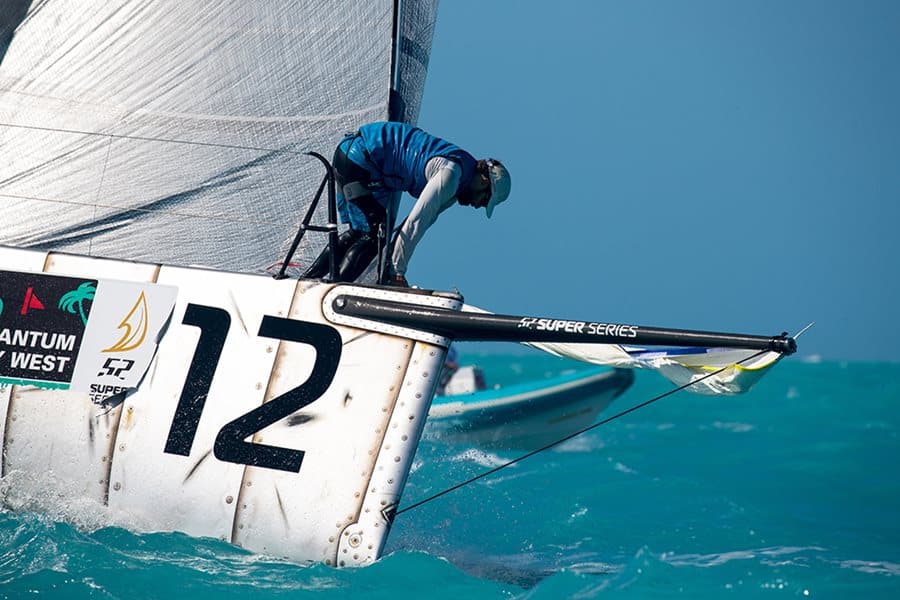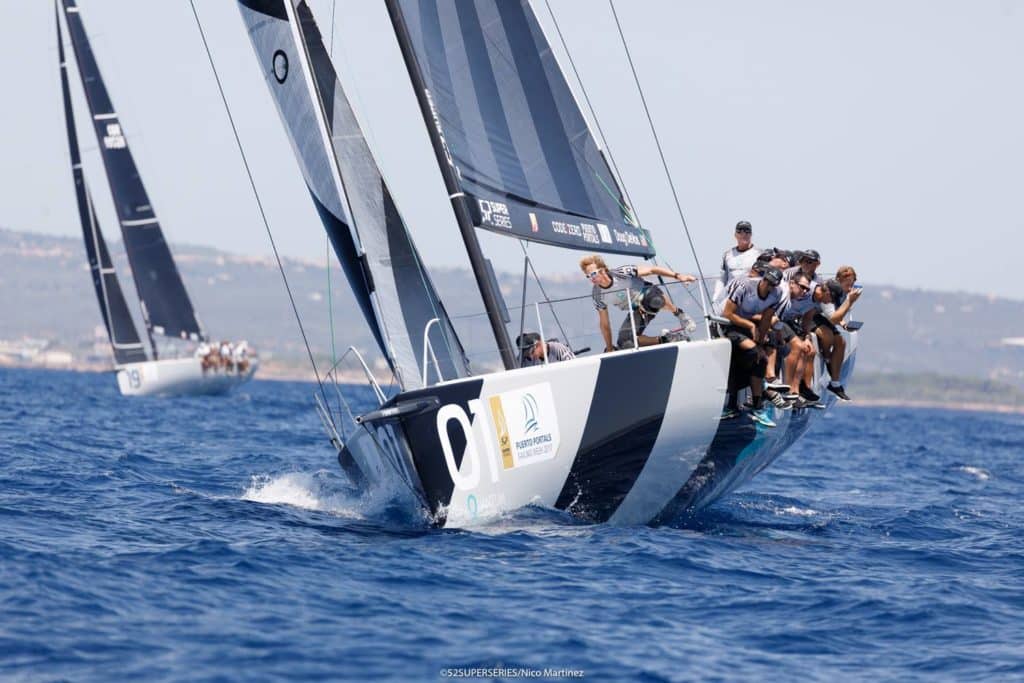
We reached out to a mix of successful sailors to find out what they want the other crew members to keep in mind to help them execute their job the best they can. Here’s what they had to say:
Bow:
“The race is not over until the spinnaker comes down. It is easy to switch to recovery mode right after crossing the finish line, but this can be costly with a messy takedown, ripped or wet sail. To go along with this, after races finish send the jib bag up before the food bag! It’s frustrating for the bow when I’m are ready to flake the jib and everybody is eating.
I am happy to see the tactician’s general awareness of the bow team. We understand tacking mid jib-flake can’t always be avoided, but a quick cleanup with everyone cooperating makes life much easier. Lastly, my lifeline is the pit position, I like when this person is attentive and stays by their position until the bow team finishes cleaning up between races!”
Mast:
“The mast is a lot easier when trimmers have patience on the set. They can pop the spinnaker open by sheeting too early and make the mast and foredeck look terrible! My key teammates are sewer and pit: a spinnaker set never works well if the trimmers, mast, sewer and pit are working independently, but when we hit on all cylinders, the set will be a thing of beauty. The other critical players to a happy mast are the tactician and helmsman. If the boat isn’t in proper orientation to the wind when it is time to take the spinnaker down disaster can strike. A great bow/mast team will make it work, but a little waggle to help collapse the spinnaker goes a long way for a clean drop.”
– Andrew Spaulding
Pit:
“Be mindful of where things are thrown. For example: a jib change on the run, I may not be the one putting the old jib or bag down below, so I ask teammates to be mindful of the flaked kite halyard. I flake it once and then spend the rest of my run focusing on weight placement, pole position, finding the leeward marks and it becomes time consuming to have my head in the boat for longer than necessary.
The pit is in the middle of two groups. When it comes to maneuvers, the bow and brain trust may not always be on the same page, and I often have to decide which one to follow. If the back of the boat is calling for something that the bow is not ready to do; I can’t force the issue. I can facilitate it, convey the sense of urgency, but I can’t take the spinnaker down or jibe it by myself. This communication becomes easier if I receive clear and timely information from either end of the boat.”
–Scott Murin
Headsail Trimmer:
“Acknowledgment of communication. If I ask a teammate to do something, they should either act on it immediately or answer ‘copy’. If there is no acknowledgment, the person making the request often asks two or three times getting louder each time. I often see this situation and, my ultimate pet peeve is when the teammate finally answers and says ‘I HEARD YOU!’ When people say “copy” I can leave the task with them and move on. My other suggestion is to make habit of saying the person’s name before making a request so their attention is grabbed and time is not wasted by repeating what they didn’t hear before their name was called (this could be the difference between a collision and a race win).” Morgan Trubovich
“A briefing with the days goals. There should be a morning discussion describing the weather, potential courses, and anything else important. After the team is on the same page, people can break into groups depending on who they need to interact with throughout the day. I talk to my offside trimmer and grinders about what situations may come up and then I talk to the main trimmer about possible sails and boat settings.
It is also important to have quiet and calm maneuvers. I like to have ongoing discussions about what’s to come so when the boat is actually turning everyone has already anticipated their weight placement and I can focus on feeling the sheet run through my hands.”
– Dave Gerber

Main Trimmer:
“The most important thing is pressure calls and relatives. A main trimmer is ‘head in the boat’ which only gives them so much feel, so consistent and accurate information are crucial for boat speed. I am happy with simple dialogue with the tactician to know what modes are expected. If we develop standard steps, it becomes easy to be on same page.
The jib and main must also cooperate, they are constantly working together to make the boat do what the tactician wants. As a main trimmer, I let the jib do what they want and communicate when they are hitting the main or when they can be tighter. It’s good to develop concise key words and terminologies for any maneuver where the main has to be fine-tuned; some examples: high build, high kill, half tack, speed build, or racing.”
– Luke Lawrence
Driver:
“I love it when new crew get onboard, listen to the race conversation and offer input where it might be lacking or where he/she can contribute value. For example, if no one is calling breeze on the rail, it’s great to have a crew take the initiative to make very concise and valuable breeze calls (Puff on in 3, 2, 1….). It’s also great when new crew take a few minutes to observe, listen and see what info or help might be needed instead of diving right in without first watching or thinking. It’s valuable when a crew member offers input and “finishes the sentence.” How many times have you heard someone say “…the right has a lot of pressure….” AND what??? Inquiring minds want to know. Finish the sentence: “… and they look strong/are headed/etc.” Completing the sentence and picture for the tactician, driver and speed team is extremely helpful. A positive attitude and imploring the “5 second rule” (does what I’m about to say make sense and is it valuable? Am I finishing the sentence with my comment? ) make any crew a welcome addition to my boat.”
Tactician:
“Come with a game face on. There is always time for bar talk, but it shouldn’t be before racing. I appreciate team members who get to the boat and prepare their position for racing. When people scatter and aren’t responsible for their area it takes away from what I need to be doing as a tactician and the performance suffers.”
– Geoff Ewenson
“Clear and short communication. I am happy when the trimmers and I are in sync with what steps we will take as conditions change. It is helpful for me to understand which way the trimmer is likely to move the leads, etc. as the breeze changes. For me, tactical input and observations are certainly invited before situations happen, especially 10 minutes before a start.”
– George Szabo
Boat Captain:
“Ask questions at the right time. I love when people want to learn and be involved with how the boat comes together, but choose a time when not much else is going on, probably not when I’ve just sat down to service a winch. I love it when each crew member takes responsibility for their station and addresses problems early, and to take it one step further if they are part of the solution whether it be a short term regatta fix or the long term ultimate fix, it’s fun to bounce ideas off others.
My life becomes easier when teammates self-delegate. I think of tasks as skilled and unskilled; if you are unsure how to help with the skilled boat work, there are always unskilled items that can be taken care of. Examples: filling water bottles, organizing down below, grabbing food and clean up. And if you still don’t know what to do, ask yourself, ‘If I were running this boat, what would I want done right now?'”
– Kyle Kant
– – –
This article is brought to you by Quantum Sails.









